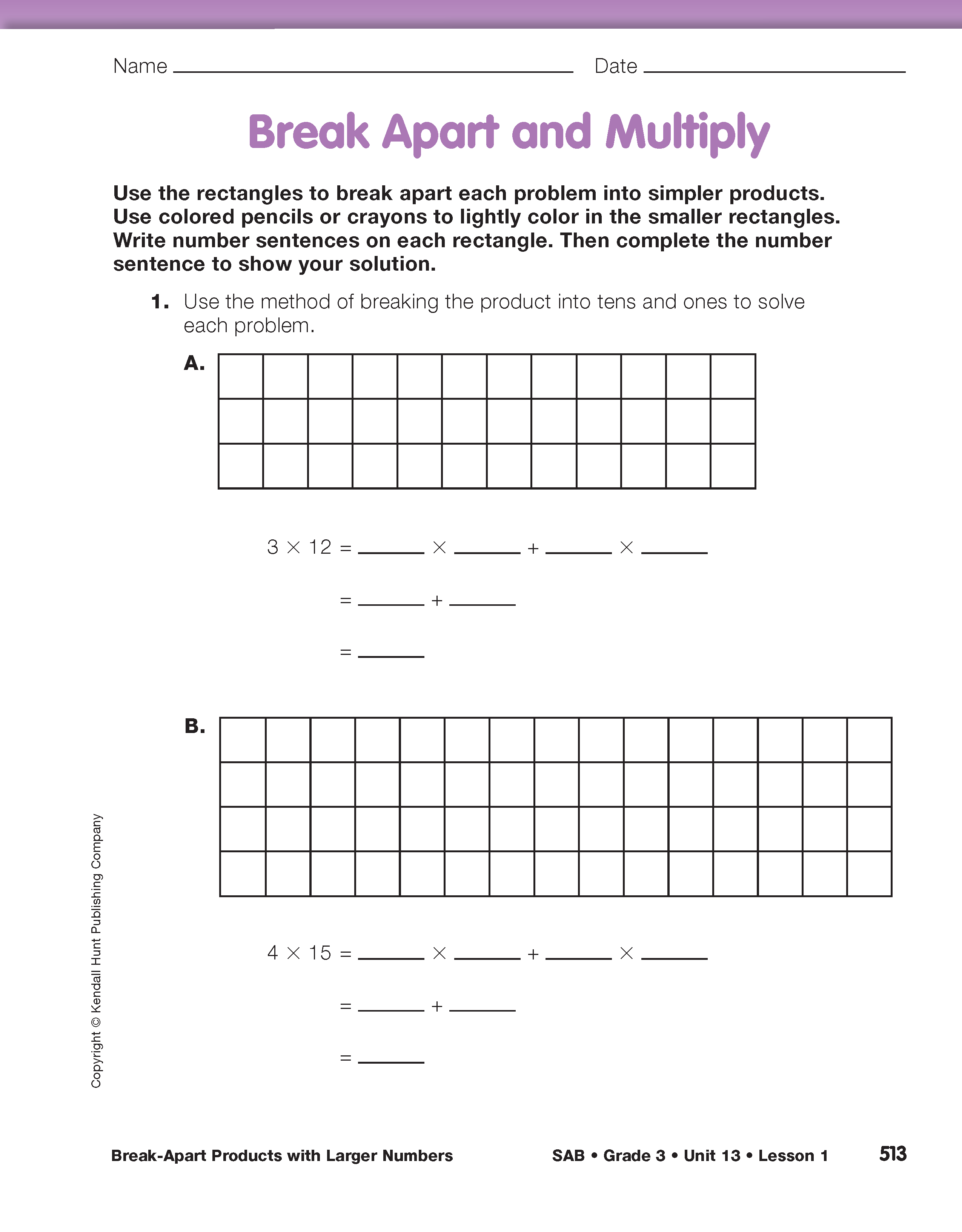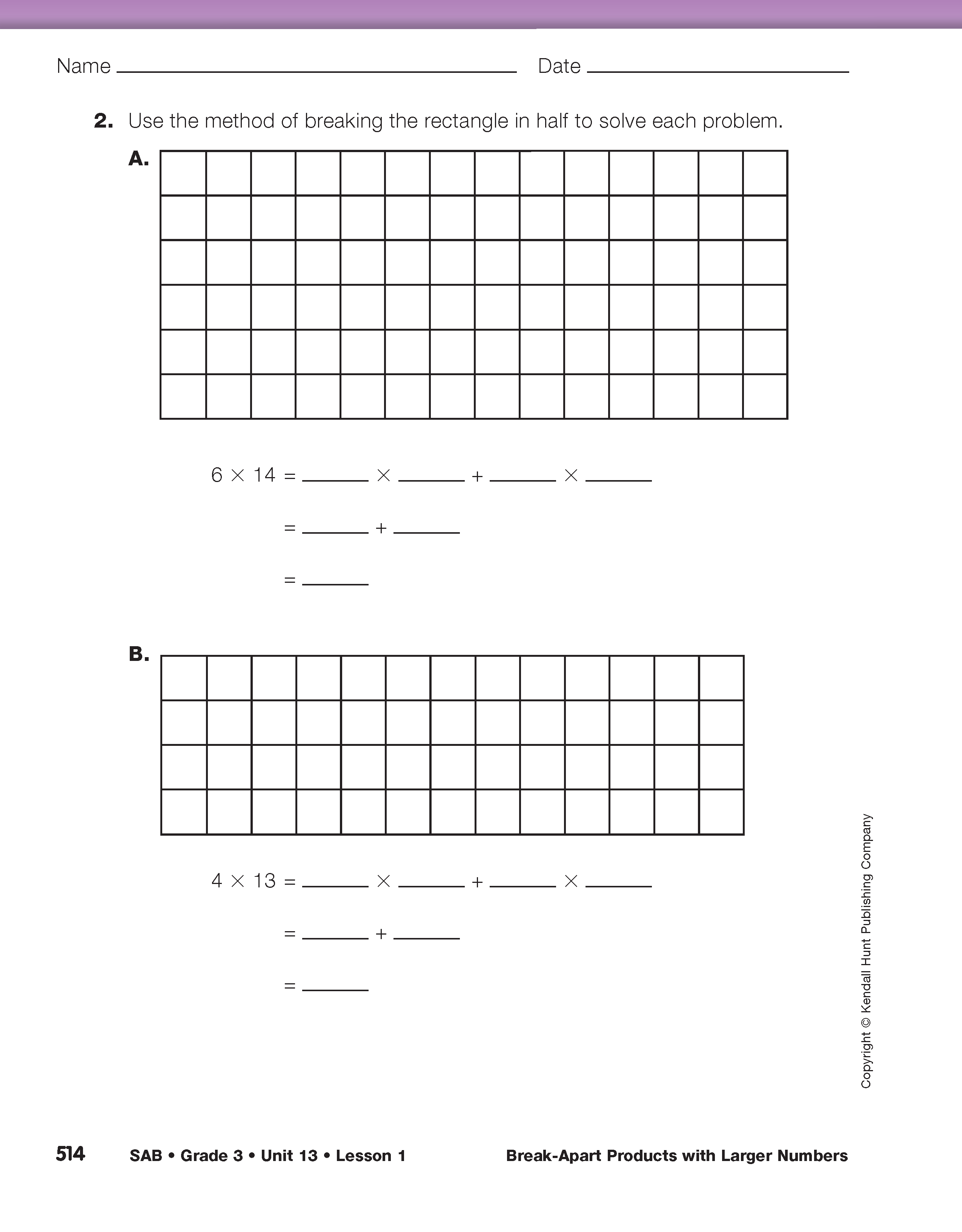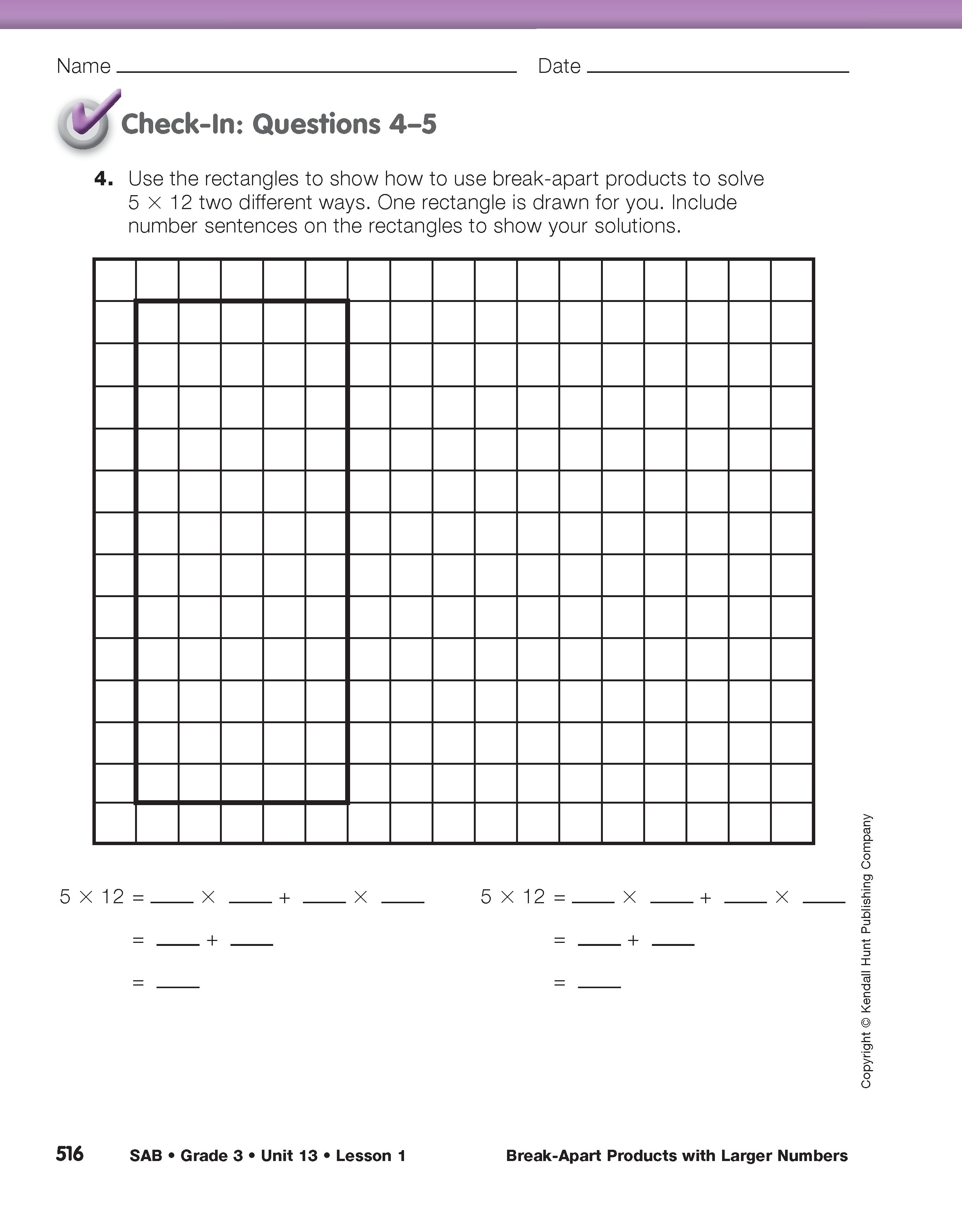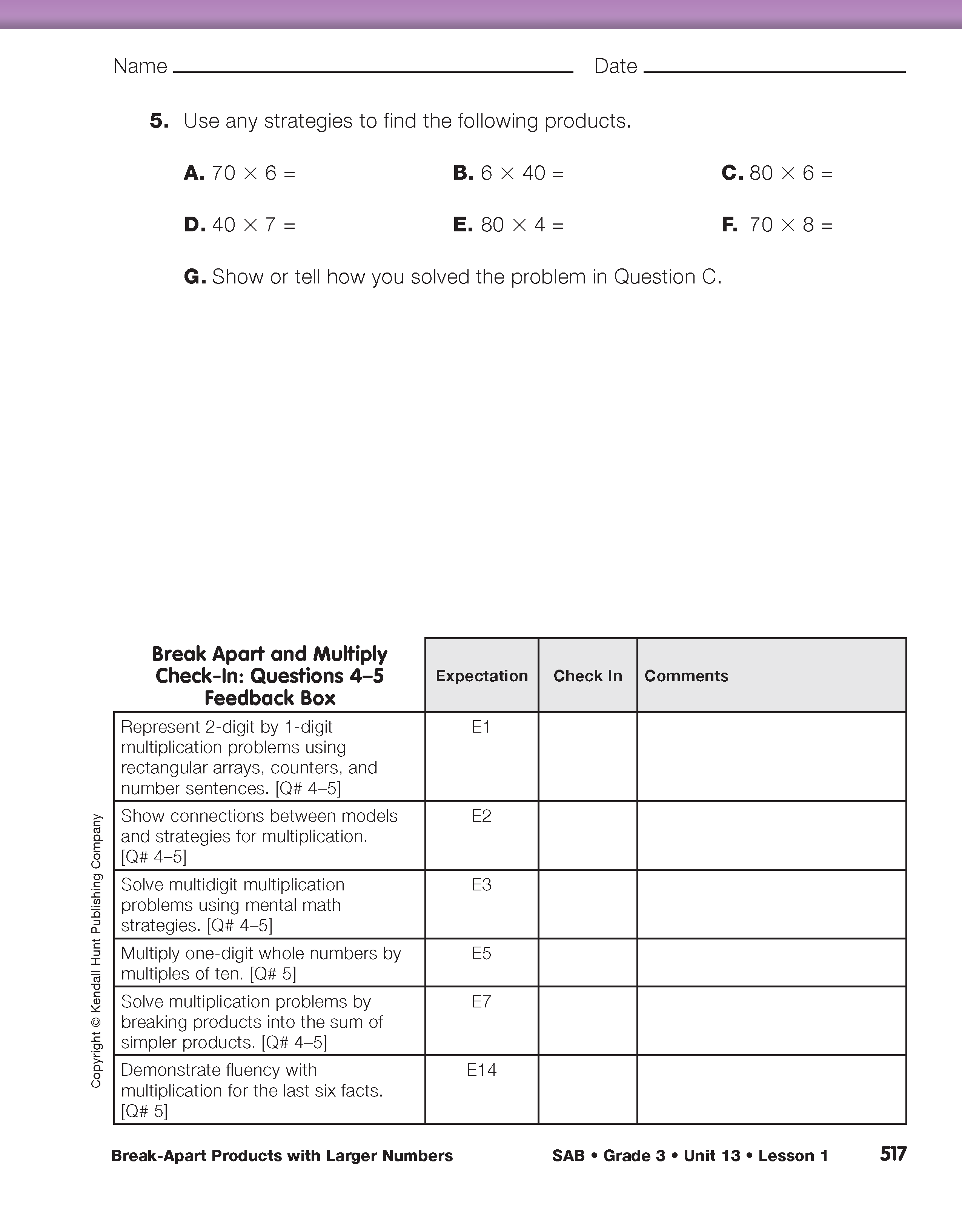Break-Apart Products with Larger Numbers
Est. Class Sessions: 1Summarizing the Lesson
Breaking apart products allows students to do many calculations mentally and is, in fact, the basis for the traditional paper-and-pencil multiplication algorithm. Ask students to look over the solutions to Questions 1–4 on the Break Apart and Multiply pages in the Student Activity Book and reflect on which ways to break apart their products resulted in simpler calculations.
In Questions 1–2, students are asked to solve problems using Rosa's method, which is to break a factor so one of its parts is 10, or Mark's method, which is to break a factor into halves.
Ask:
Using a display of Check-In: Question 4 on the Break Apart and Multiply pages, ask students to show how they found products by breaking the 5 × 12 rectangles apart. Select a student who used a solution involving a ten, and then another whose solution involved breaking a product in half. For each solution, ask the student to show how they broke the large rectangle apart, ask a different student to write the two number sentences on the smaller rectangles, and ask a third student to write the number sentence that matches the solution to the problem. Make connections between the models and the students' number sentences by asking what each number represents.
















